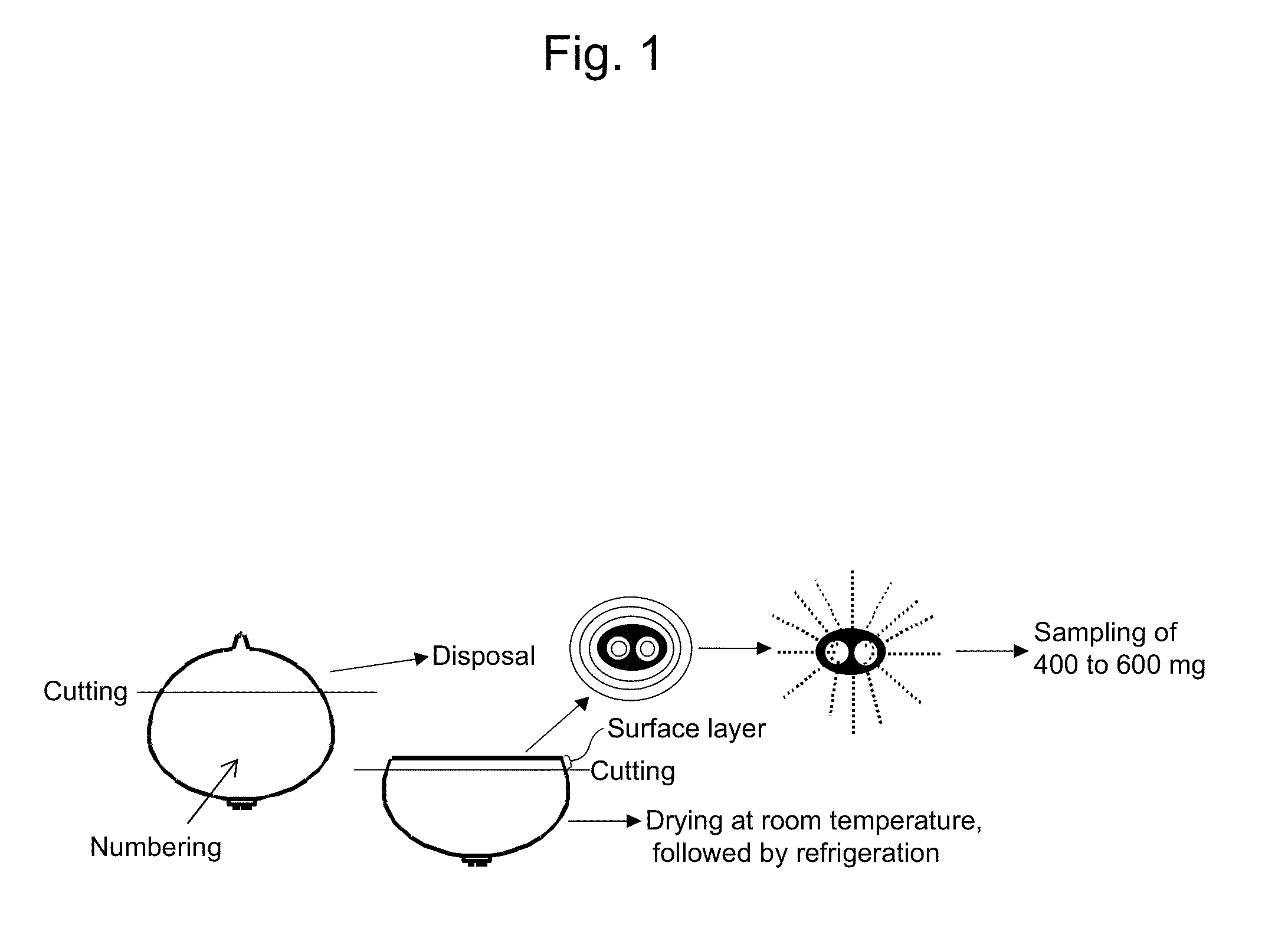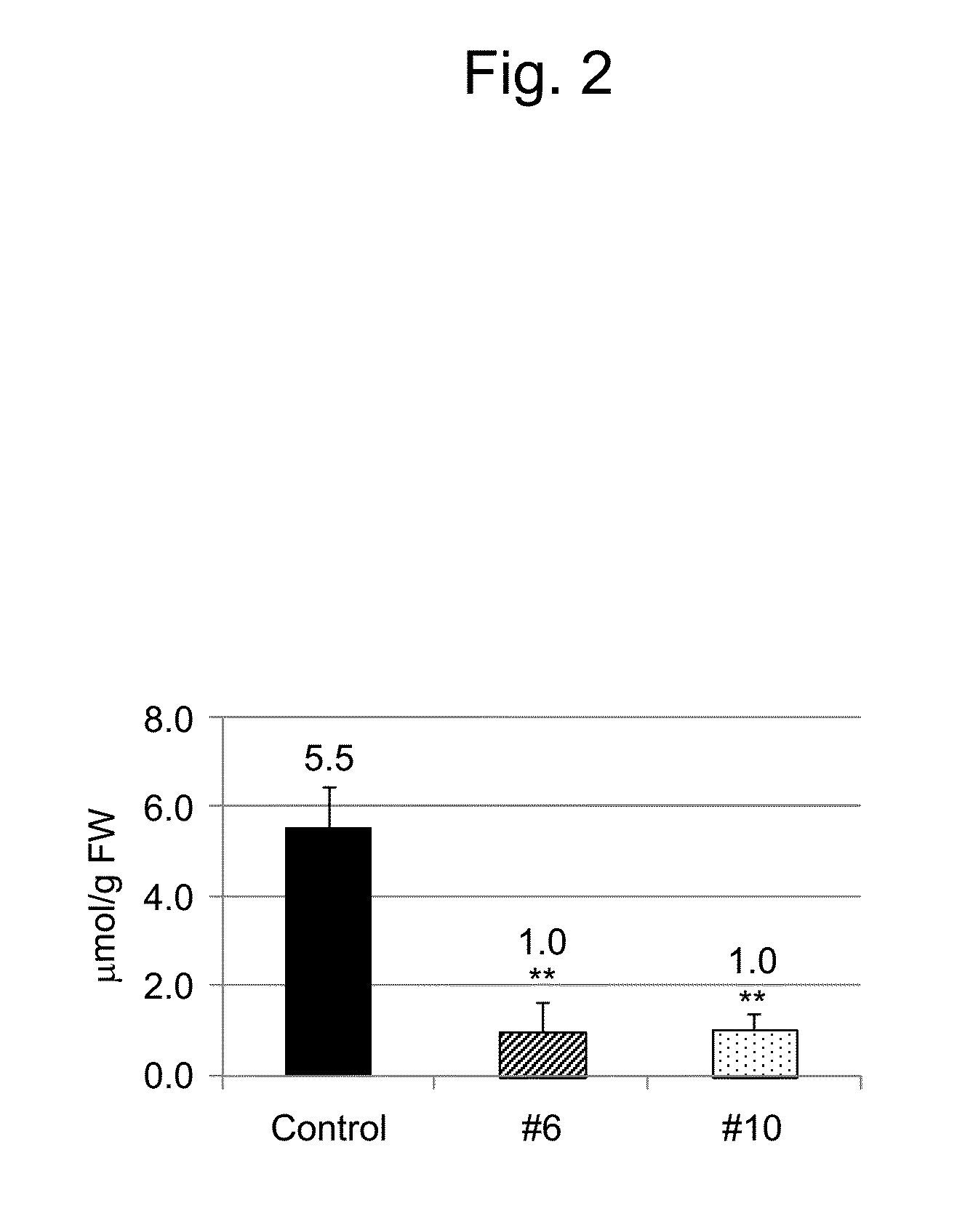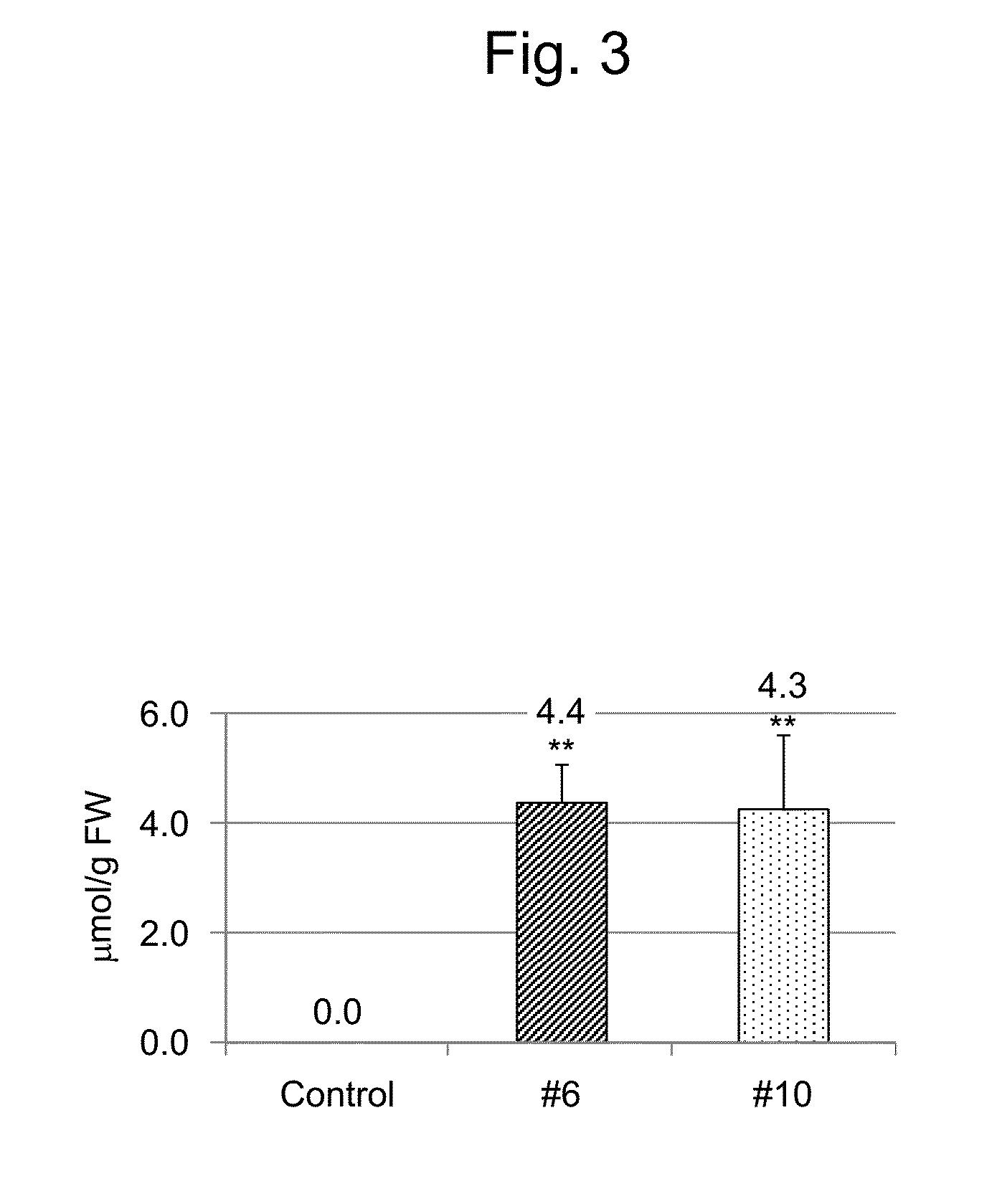Onion with reduced pungency that does not generate lachrymatory component
a technology of reducing pungency and generating lachrymatory components, applied in the field ofonions, can solve the problems of difficult raw consumption of vegetables, loss of nutritious components due to immersion, and yielding some pungency, etc., and achieves tear-inducing properties and weak or no pungency
- Summary
- Abstract
- Description
- Claims
- Application Information
AI Technical Summary
Benefits of technology
Problems solved by technology
Method used
Image
Examples
example 1
Production of Spring-Sown Onion without Pungency and Tear-Inducing Property
(1-1) Production of M1 Onion Bulb
[0094]About 1,500 seeds (6.08 g) of Super Kita-momiji were introduced into a plastic petri dish with a diameter of 10 cm, and the seeds were irradiated with neon ion beams at 20 Gy, and the mutagenized first-generation seeds were prepared (hereafter referred to as From the resulting M1 seeds, 60 seeds were separated and subjected to the germination test, so as to estimate the rate of germination and the rate of normal development. Specifically, Golden Peatban was introduced into an accompanying plastic tray, and the tray was filled with 700 ml of tap water. 10 to 15 minutes thereafter, 60 seeds were sowed on Golden Peatban that had absorbed all water and swollen to fill the tray. The tray was allowed to stand in that state in a room overnight, it was transferred to a greenhouse (15° C.), and plants were then allowed to grow therein. One month after sowing, the rate of germinat...
example 2
Various Measurements
[0129](2-1) Measurement of the Amount of Pyruvic Acid Produced when Tissues are Broken
[0130]Onion tissues (600 mg) ere sampled in accordance with the method described in the “(1-4) Preparation of analyte sample” section above and introduced into the 2-ml Eppendorf safe-lock tube containing 3 zirconia balls (φ: 3 mm). Distilled water (0.6 ml) was added, the tissues were broken using a bead mill (MM300, QIAGEN) at 30 Hz for 2 minutes, and this procedure was repeated 3 times. The resultant was then allowed to stand at room temperature for 10 minutes and then centrifuged at 15,000 rpm and 4° C. for 10 minutes. The supernatant was designated as the sample. The sample (20 μl) was introduced into wells of a 96-well plate, 43 μl of water and 66 μl of a DNPH solution were added 30 minutes after the tissues were broken, and the reaction was allowed to proceed at 37° C. for 10 minutes. Thereafter, 66 μl of 1.5 M NaOH was added to terminate the reaction, followed by mixing w...
example 3
Results of Various Measurements and Evaluation of M4 Onion Bulb
(3-1) Functional Evaluation
[0139]Samples were obtained from the two lines of M4 onion bulbs (the line #6 and the line #10, 20 bulbs each) and 5 bulbs of the control Sapporo-ki variety in accordance with the method described in the “(1-4) Preparation of analyte sample” section above. At least two panels were asked to evaluate functions by the method described in the “Functional evaluation” section above. That is, the M4 onion bulbs were compared with the control bulbs, and whether or not significant reduction was observed in the degrees of tear-inducing property exhibited when some samples were broken and / or pungency exhibited when some samples were broken or eaten was evaluated. As a result, none of the line #6 or #10 bulbs exhibited pungency (Table 1).
TABLE 1Number of bulbs subjected toNumber of bulbsfunctional evaluationexhibiting pungencyControl55#6200#10 200
(3-2) Amount of Pyruvic Acid Produced when Tissues are Broke...
PUM
| Property | Measurement | Unit |
|---|---|---|
| thickness | aaaaa | aaaaa |
| diameter | aaaaa | aaaaa |
| thickness | aaaaa | aaaaa |
Abstract
Description
Claims
Application Information
 Login to View More
Login to View More - R&D
- Intellectual Property
- Life Sciences
- Materials
- Tech Scout
- Unparalleled Data Quality
- Higher Quality Content
- 60% Fewer Hallucinations
Browse by: Latest US Patents, China's latest patents, Technical Efficacy Thesaurus, Application Domain, Technology Topic, Popular Technical Reports.
© 2025 PatSnap. All rights reserved.Legal|Privacy policy|Modern Slavery Act Transparency Statement|Sitemap|About US| Contact US: help@patsnap.com



